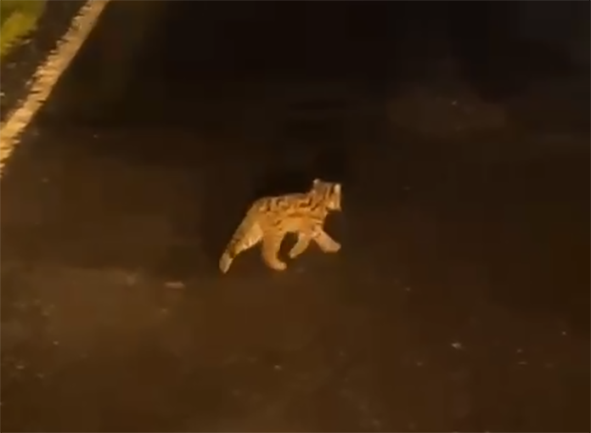[ Prem Chetry ]
TAWANG, 1 Aug: A leopard cat cub was recently spotted wandering along the road near the Jang Jhungeyteng bridge, located on the route connecting Jang LGG road to BJG gonpa, in the vicinity of Jang township in Tawang district.
This sighting was captured on camera by Sameer Tamang, a young student, on 25 July, just 8 kilometres from Jang township. The spotting of the cub has sparked excitement and optimism
among local residents, wildlife enthusiasts, and conservationists alike.
The leopard cat (Prionailurus bengalensis), a small wild feline native to South and Southeast Asia, is classified as a Schedule I species under the Indian Wildlife Protection Act, 1972. This designation affords it the highest level of legal protection due to its ecological importance and vulnerability to threats such as habitat loss, poaching, and human-wildlife conflict.
According to senior ZSI researcher Ritam Dutta, sightings of leopard cats, particularly cubs, are exceptionally rare in this region, making this event a significant milestone for conservation efforts.
The presence of a cub is particularly noteworthy as it confirms the existence of a breeding population of leopard cats in the area. This is a positive indicator of the species’ survival and the health of the local ecosystem. Leopard cats are elusive, nocturnal creatures, often inhabiting dense forests, grasslands, and mountainous regions. Their ability to thrive in the rugged terrain near Jang suggests that the surrounding habitat remains conducive to supporting this elusive species.
Phurpa Tsering, a local resident of Jang, said that the sighting has also brought immense joy to the people of Jang township and surrounding areas. For the local communities, such rare wildlife encounters often hold cultural and spiritual significance, fostering a sense of pride and responsibility towards protecting their natural heritage.
The rare sighting of the leopard cat is a reminder of the importance of continued conservation efforts in the region and community involvement. Experts emphasize that protecting the leopard cat requires preserving its natural habitat, which includes dense forests, grasslands, and water sources.





